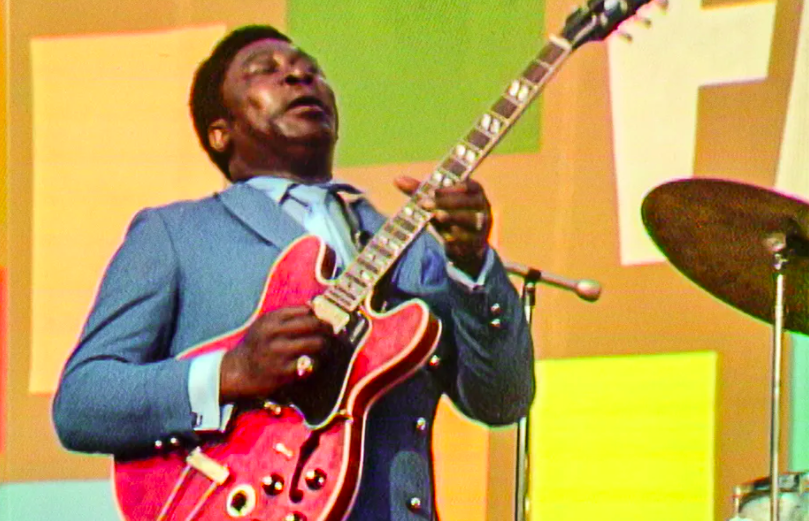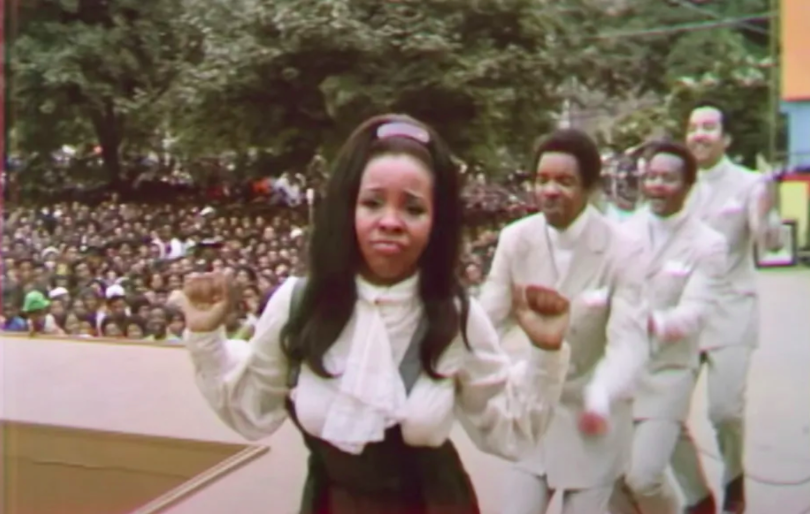Jimi Hendrix was the only artist who asked to be a part of The Harlem Cultural Festival.
That’s right. A weekly series of six concerts put on in Harlem’s Mt. Morris Park (now Marcus Garvey Park) during the summer of 1969, featuring 25 artists that played to over 300,000 attendees. It seemed to be the right setting for some Hendrix magic, the right moment to make that undeniable connection with Harlem, USA.
But his request was rejected.
That’s right. The services of the world’s greatest instrumentalist, the shy guitarist who came up through both the Isley Brothers and Little Richard’s band, learned all the guitar tricks on the chitlin circuit, allowing him to upstage ANYBODY trying to shred in his presence, didn’t mean squadoosh to the event’s top brass.
The golden opportunity for Jimi, who would die a year later, to witness the full embrace of the Black community, to give everyone a moment in which to say “We get it, Brother,” was not meant to be. He wasn’t perceived as a healer.
“Jimi had a strange relationship with the Black community at that time,” says Ahmir “Questlove” Thompson, who directed the new documentary of the Harlem Cultural Festival, in a recent Pitchfork interview. “Like, ‘He’s a little too wild for us, so he’s on that side of the fence.’”
Questlove’s debut film SUMMER OF SOUL (…OR, WHEN THE REVOLUTION COULD NOT BE TELEVISED), winner of both the Grand Jury Prize and Audience Award at Sundance Film Festival, is an acute study. It serves as a communal healing en masse, packed with mythical performance footage, “can you believe that?” moments—with oh-so-unapologetically-Black BBQ vibes. From the avant-garde to the amen corner, the festival represented the utter apex of Black culture as it had never been documented before.
The concert footage is courtesy of Hal Tulchin, a television director who filmed all six concerts hoping the film could eventually be monetized—or simply, seen by the public. Despite the Harlem Culture Festival having a major backer in the Maxwell House coffee camp, and a stellar roster of talent that could book numerous episodes of “Soul Train,” only two hours of footage saw the light of day on WNEW Channel 5 in New York City.
Help us save local journalism!
Every tax-deductible donation helps us grow to cover the issues that mean the most to our community. Become a 48 Hills Hero and support the only daily progressive news source in the Bay Area.
In the shadow of Woodstock, taking place in the same summer, Harlem’s concert was perceived by the populace as (say it with me now) “too Black”. Woodstock became a movie, and then, a generational identifier, making an insane amount of capital for THAT counterculture. Meanwhile those 40 hours shot by Tulchin of HCF were forgotten about, and stashed in his dusty basement for decades. Fortunately he kept all 47 reels.

Almost 50 years later, it was retrieved, cleaned up, and edited to serve as the backbone of Summer of Soul.
Questlove sequences the film like a textbook Stevie Wonder album from the ’70s, stashed deep in your parent’s record collection. Big energy at the start and finish, emotional spirituality in the middle.
Segments throughout are affixed with distinct narration. As stated by Musa Jackson, who attended the festival at the age of five, “It smelled like Afro Sheen and chicken.”
Hendrix would go on to cement his legacy that same summer at Woodstock, about 100 hundred miles away. But that bond between performer and concert-goers, which is probably what he was perilously seeking later in his career, was missed.
“He got to a point where he got tired of being the freak-show darling of the industry,” says Thompson. “So he disbanded his group, got an all-Black group—the Band of Gypsys—and asked [the Harlem Culture Festival], ‘Can we perform? We want to do a blues set.’ And they said no.”
It’s hard to grasp the richness of culture, music that is, over the course of those performances. Mahalia Jackson, The Staple Singers, The Fifth Dimension, Cuban percussionist Mongo Santamaría, Herbie Mann featuring Roy Ayers on vibes, Ray Barretto, Pharoah Sanders & Sonny Sharrack, Gladys Knight & The Pips. It almost breaks your brain to understand that all of those performers were at their highest altitude of performance in 1969. Nobody was putting on a Vegas cash grab here, not in front of a Harlem crowd. Racial oppression or not, they’ve swept plenty of fools off the stage at the Apollo.

The more I watched, took it in, and deeply absorbed the enormity of this Mount Rushmore gathering of herculean Black musical talent, it became altogether blatant. Anyone chosen (sorry, Jimi) to perform at the Harlem Culture Festival, in this neighborhood park, in close proximity to the world-famous Apollo Theater? They were adhering to a higher calling. Artists were not just giving a performance, they were in service for the upliftment of Black, Brown, and beige America’s souls. That was the agenda and the purpose.
These sought-after artists of the day gave all they could in perspiration, tears, the good word, and unrestrained boogie as they played for their people in the heart of Soulsville. Both performers and concertgoers were witnesses just hoping to survive the bombardment of civil unrest as the ’60s came to a roaring, destructive end. All came to Harlem on these six Sundays yearning to be healed on their own. Not by a white savior, but via this magnetic frequency: avant-garde jazz, pop, psychedelic R&B, Afro-Cuban son, blues, and gospel.
In Summer of Soul, Questlove pulls out the tense duress through sharp intercuts of JFK’s assassination in 1963, Malcolm X’s in Harlem in 1965, Dr. Martin Luther King’s in April of 1968, and then RFK’s two months later. They serve as a sharp reminder of how at the time, marginalized communities were under attack, and set up the the primary purpose of the festival; to commemorate the anniversary of Dr. King’s death.
As mentioned by an attendee in the film; “It felt like the system was letting you down. The goal of the festival may very well have been to keep black folks from burning up the city in ’69.”
From the opening performance, a 19-year-old, extremely dynamic Stevie Wonder, feeling his Wheaties, bangs the snot out of a drum kit like Berry Gordy owed him royalty money. Later, BB King runs a funky uptempo version of “Everyday I Have The Blues,” with a backbeat just begging to be chopped up for sampling by The Bomb Squad of Public Enemy fame.
Everyone on the bill was double-clutching, coming with it.

David Ruffin, clean and cunning, strutted out on stage knowing he was going to slay, putting the winsome moves on 30,000 Black women, singing “My Girl” in a wool suit, in the dead heat of summer. Nina Simone’s performance closes the doc. She reads poetry to the crowd, jeering them into “getting ready” for the revolution, while an overdub in her voice declares, “How can you be an artist and not reflect the times?”
Ironically, it was the essence of Sly and The Family Stone, the focus of Questlove’s next documentary, that gives insight to the generational shift captured here—the same one that kept Hendrix out of the 1969 line-up. The music and musicians were outliers. Everyone at the concert under 25 knew who the band was, leaving the elders alone in throwing side-eye at this racially intermixed and multi-gendered band featuring a Black woman on trumpet and a white dude playing drums. Nobody booed, but they did leer. All the band members wore street clothes, an unmistakably San Francisco style, flying in sharp contrast to the performance uniform to which many Black musicians and performers still adhered.
The band earned their $2500 performance fee, while using the opportunity as a rehearsal for their upcoming Woodstock performance two weeks later. The show would solidify Sly as a star, and slowly begin his demise. But surprisingly, it took the band four songs to really lock-on with the Harlem crowd. Questlove utilizes various camera angles to show that gradual approval.
If only they’d given Jimi the chance.





